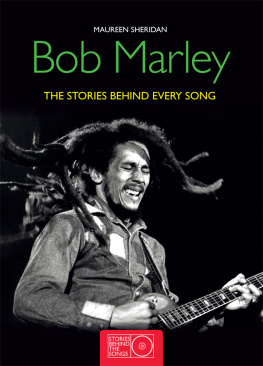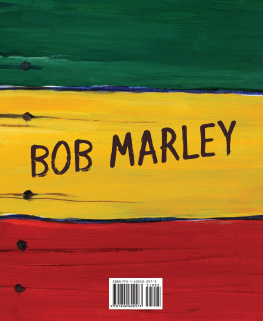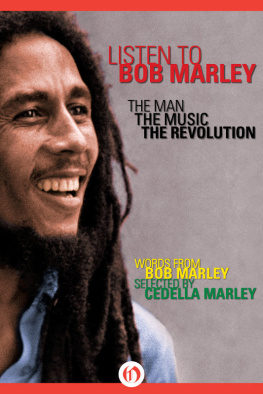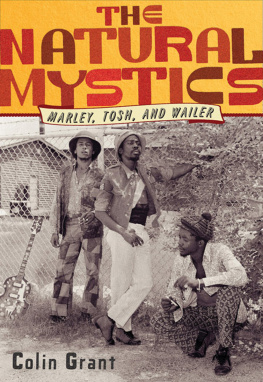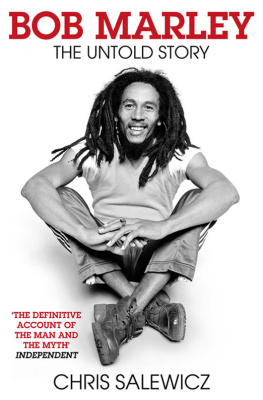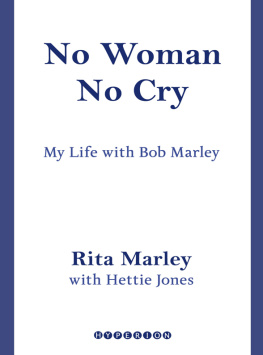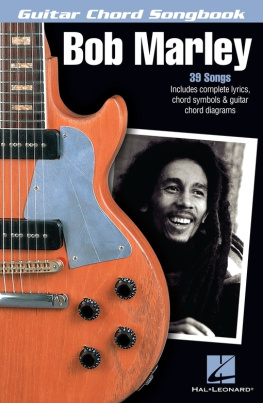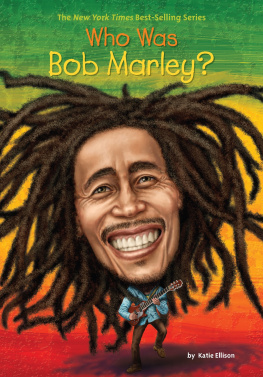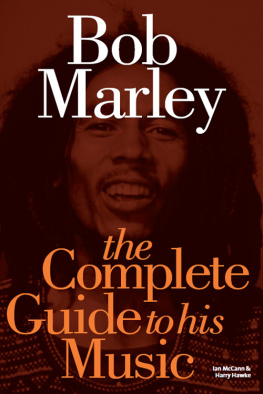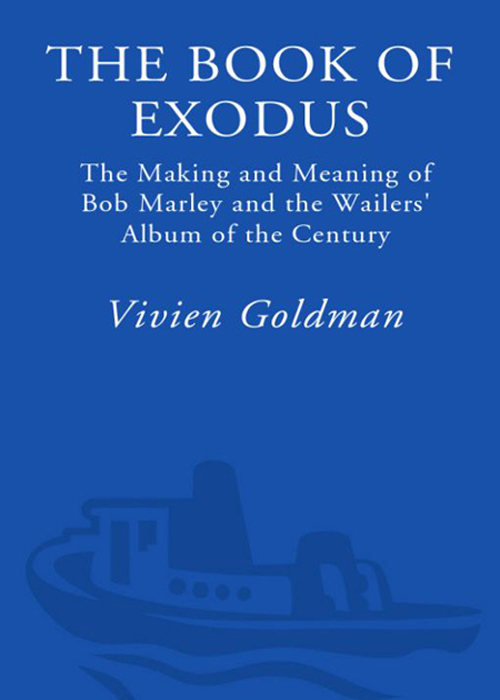
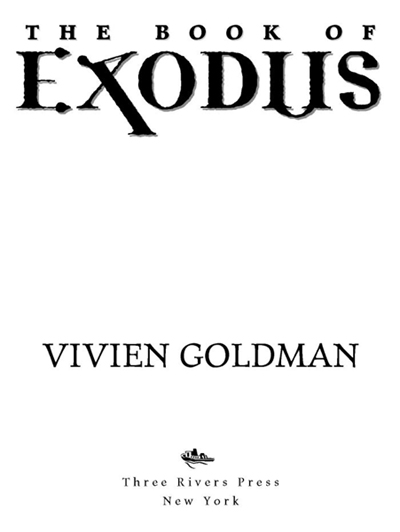
Table of Contents
Today we talk kind of personal, I dont come down on you really with blood and fire, earthquake and lightning, but you must know seh that within me all of that exists too.
Bob Marley to Vivien Goldman,April 30, 1977, Chelsea, London
OVERTURE
NATURAL MYSTIC
WINTER, 2004. NEW YORKS LOWER EAST SIDE. Im surprised to note my fingers tremble slightly as I pull the little yellow plastic box with its cheeky Mickey Mouse logo out of my underwear drawer and unclip the lid. The loony box itself evokes a distant day when cassettes were still quite new and appropriate storage scarce. The ferrous oxide tape within is black goldaudiocassettes of my 1970s interviews with Bob Marley, labeled in a hasty scrawl that suggests the reality of the time: if Id missed something, I could always talk to Bob again. No chance of that now, except perhaps in dreams.
It seems like eons ago that I lent this box of cassettes to Island Records in London, which was interested in using them for a documentary. They were rejected thanks to the lousy audio, as my cassette players were always crummy. My fellow Bob Marley biographer and friend, Tim White, taped over his old Bob interviews; he needed the cassettes. We were all very broke then, just starting out. Someone at the documentary production company lost the originals and I only got back copies, rather annoyingly. Its actually miraculous I still have them, having changed countries various times on my own exodus and lost most other material things: the carved furniture my Jewish grandparents managed to take with them from Germany in the 1930s, with its carved roaring lion heads; the red brocade couch that new refugees crashed on as they arrived from whatever hell theyd fled in Germany; the albums from my wall of sound, with every Al Green and Johnny Guitar Watson album and everything by the Wailers, including a copy of Burnin that Bob had autographed for me in his loopy, sloping scrawl: Best of every love, Bob Marley. Yet somehow, I still have this Mickey Mouse box of memories. Over a quarter century has passed since I first transcribed these talks; I can only hope the tapes havent rotted, and I wonder what they hold.
Finally listening to these interviews reminds me of the sad time in 1981 when Bob was making his last stand against the cancer at Dr. Josef Isselss clinic in Germany and I was sick in London with a very obscure disease called Bornholms syndrome. From my mothers bedroom, where I was convalescing, I would phone Denise Mills, the lanky, languid, but efficient British blond assistant to Island Records founder, Chris Blackwell, who was now in Germany as one of Bobs main liaisons to the world. Hes keeping it together, she would say in her reassuring, matter-of-fact way. I didnt know when Bob was sent home to Jamaica, making it only to Miami. On my first day back home, my friend arrived from Lagos with a gift from the revolutionary Nigerian musician Fela Anikulapo Kuti, whod heard I was sick: a plastic film container full of their special jam, a sticky dark brown paste of condensed marijuana. Warily, I took a small taste. Seconds later, I was propelled from my chair and began banging my head against my pride and joymy wall full of albumsas a green bolt of lightning split me, seemingly rearranging my molecular structure. Soon after, though, I started to feel much better and even went out for dinner with my friend. When I opened the door to my room, every surface was covered with phone messages. While Felas jam had been healing me, Bob had taken wing.
As I listen to the first tape, sitting in my Avenue C studio more than two decades later, I seem to feel that ganja jam tear through my gut again. Mixed with the splashes of children jumping into the Kingston Sheratons swimming pool and the soft cocktail jazz of the hotel bar, tape warp makes Bobs laconic drawl hiccup horribly at regular intervals, rendering it unusable for a movie, perhaps, but sending me spinning back to 1976. Lurid bougainvillea bloomed behind the round white table with its blue and white awning, where I sat with Bob and a writer from Ebony, as Chris Blackwell and Bobs streetwise manager, Don Taylor, popped in and out of the conversation. My regular photographer and friend, Kate Simon, circled us, snapping away. Bob laughed a lot that day, particularly when Kate teased him for looking vexed. That was the radiant, award-winning cover shot of Kaya, the record that followed Exodus. The Wailers art director, Neville Garrick, said he picked that shot because it was so rare to find one of Bob really laughing.
As the conversation progresses, it becomes clear that were talking just days before the shooting: Bob talks about recording Smile Jamaica, which was cut right before the attack, and says hell play me the rhythm when I next come to visit him at his home, 56 Hope Road. Its hard to transcribe the interviews because Bob is so uncannily prophetic, its disturbing. (Or awe-inspiring. Its just weird.) I shiver when he pauses, chuckles dryly, and says, Jamaica great, mon, the greatest place on earth. But is a funny place, yknow. De people dem love you so much, they would kill you. At the time, of course, while all of us chatted by the swimming pool, I took it as a figure of speech; now I have to play it twice to believe my ears, as in some three days time, thats exactly what would occur.
In examining the story of how the album Exodus was made, I discovered that this eighteen-month periodwhich had also been a significant time in my lifebecame more mysterious the closer I looked. On the most basic level, the given wisdom about the albums creation was that it had been written and recorded in London and that the songs had been written in a rush of creativity after the assassination attempt on Bobs life. But as I prodded both my interviewees and my own memories of long-ago people and events, and pieced together the basic story of how Exodus was recorded, a very different picture emerged, one that was eloquent about Bobs creative process and his single-minded commitment to his music and message. The journey itself came to have its own bittersweet poignancy as, following in Bobs footsteps, I tracked the most turbulent period of his intense existence, when he moved like a fugitive between Kingston, London, Nassau, and Miami for two years from 1976 to 1978.
Sometimes information, repeated with only the smallest of changes, came in the dreams Bob confided to friends, who never forgot themand in the sheer number of generally earthbound types I spoke to who had communicated with Bob in dreams. It is not impossible, but rather pointless, to try and examine Bob and his work without realistically acknowledging the existence of the spiritual and mystic dimension to his every day. In a literal, unpretentious way, Bob was quite consciously plugged into his prophetic skills. Every song we sing come true, yknow, he said to me seriously in his Chelsea refuge in April 1977. Bob was looking at me closely as if to test my belief. Some songs are too early, some happen immediately, but all of them happen. Burning and looting happenso much time, its a shame. The curfew. Yeeeeees, moneverything happen.
The Kabbalists say that dreams constitute one-sixtieth of the potency of prophecy, and Bobs reality was well enmeshed with dream life. Several of his friends earnestly quote me dreams that he had vividly reenacted for them, and that he felt for a fact were a portent. They seemed as significant and real for him as a business contract and he relied on them for information.
Next page

